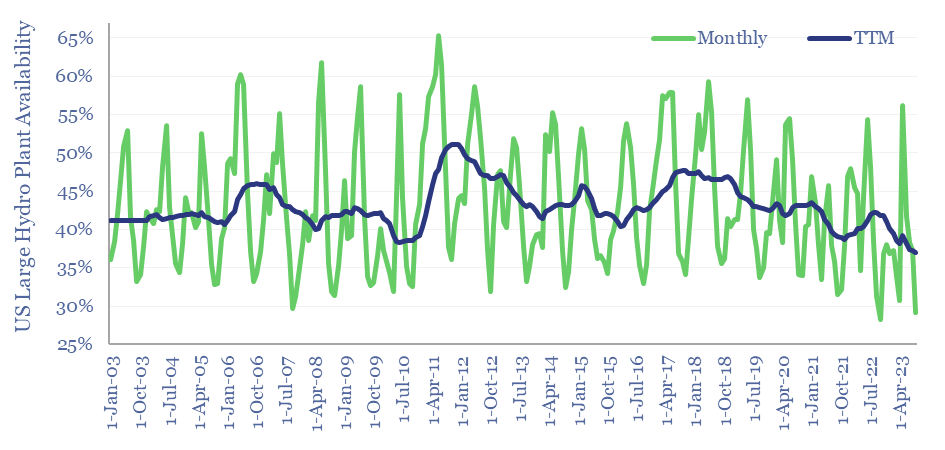
Hydro power generation by facility is tabulated in this data-file for the 20 largest hydro-electric plants in the US. The average US hydro facility achieves 43% availability, varying from 39%…
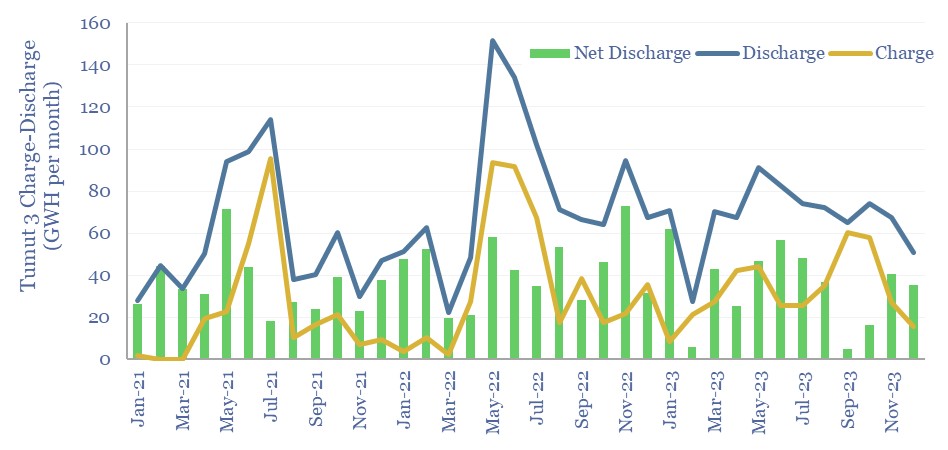
Pumped hydro facilities can provide long-duration storage, but the utilization rate is low, and thus the costs are high, according to today’s case study into the pumped hydro generation profile…
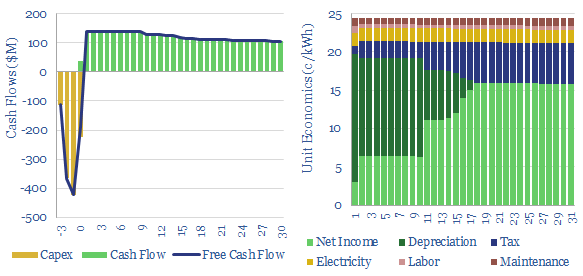
This data-file assesses pumped hydro costs, as a means of backing up renewables. A typical project might have 0.5GW of capacity, 12-hours storage duration, and capex costs of $2,250/kW. $449.00 – Purchase…
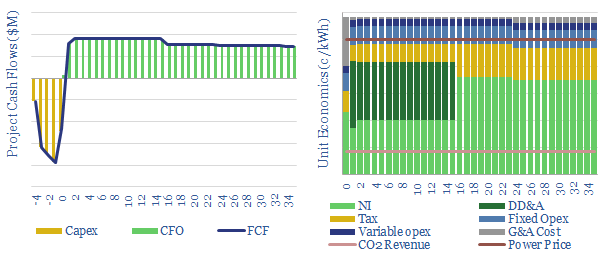
This data-file models the costs and the economics for constructing a new hydro electric power project, based on technical papers and past projects around the industry. CO2 intensity is effectively…
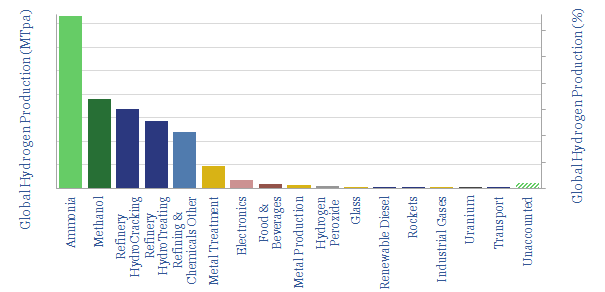
This data-file is a breakdown of the global hydrogen market, which is 110MTpa today, worth around $110bn pa at $1/kg H2 prices. Today’s hydrogen is mostly used for producing ammonia,…
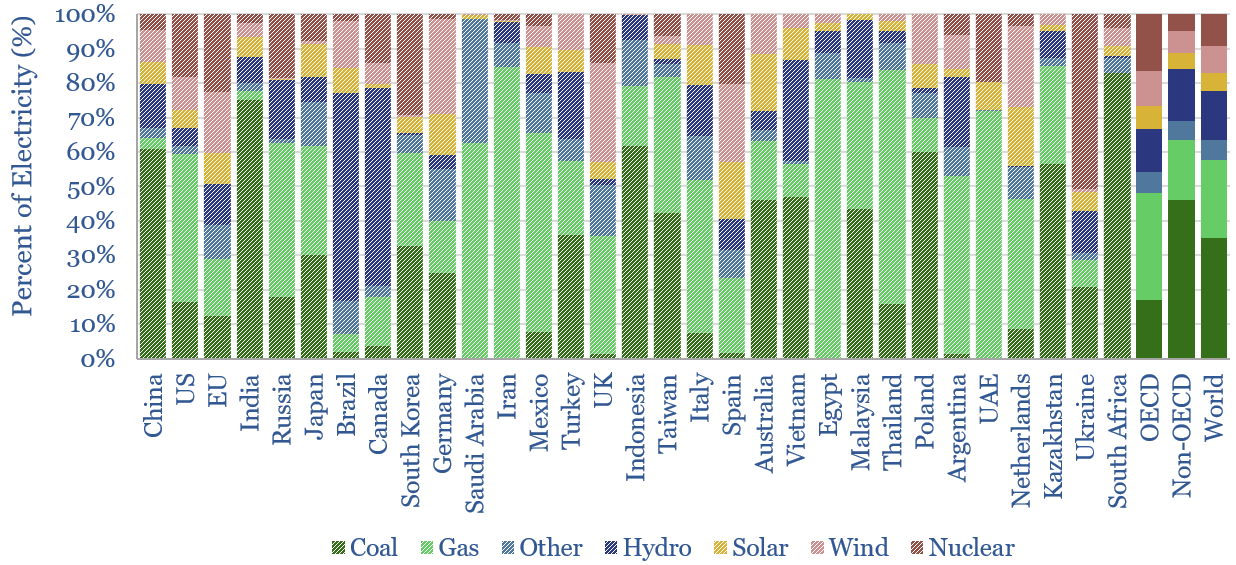
…however, belong to Norway (88% hydro, 9% wind) and Sweden (40% hydro, 29% nuclear, 21% wind, 1.9% solar), where nuclear and hydro can also buffer renewables (note here). China, India…
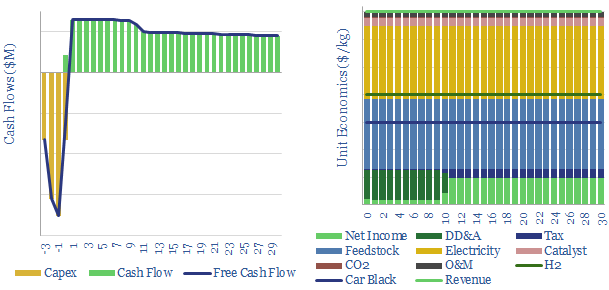
…may unlock lower costs for turquoise hydrogen than blue hydrogen or green hydrogen. The disadvantage is that methane decomposition is endothermic, thus an exterior energy source is required. If this…
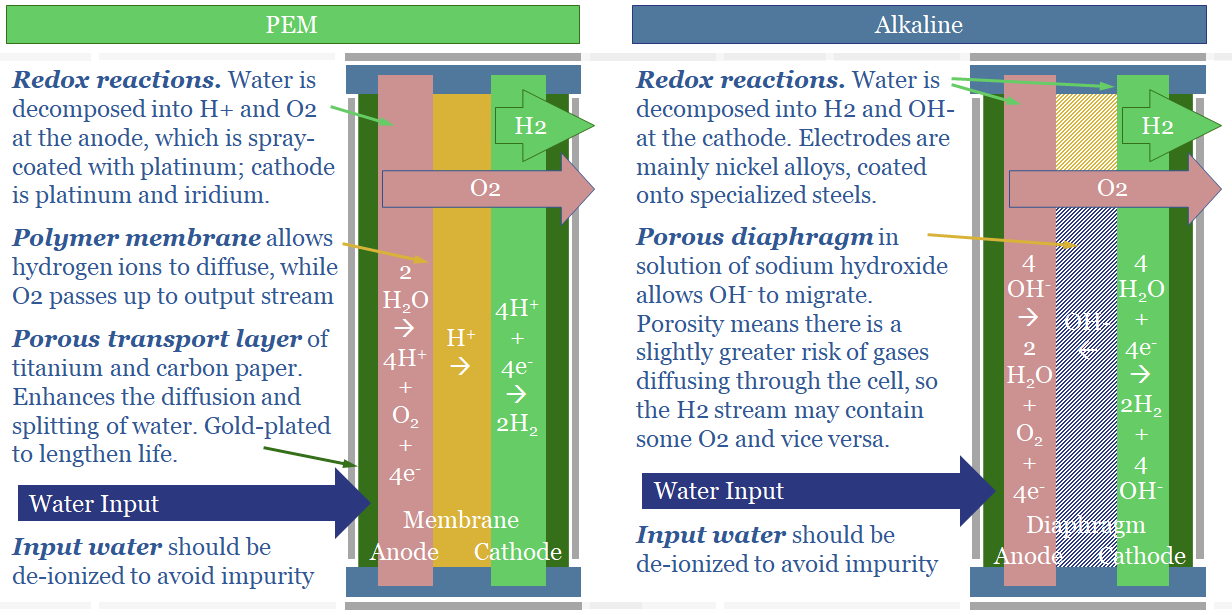
…electrolyser, alkaline OH- ions diffuse. In a PEM electrolyser, protons, H+ ions, diffuse. Ten fundamental differences follow. The lowest cost green hydrogen will come from alkaline electrolysers run at high…
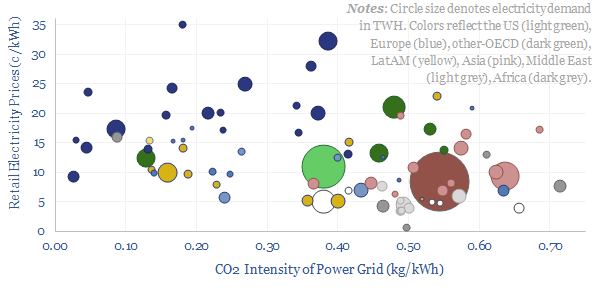
…electricity in 2021 was generated from hydro. But four countries are unusual, because they generate the majority of their electricity from hydro, which has almost no embedded CO2 intensity. They…
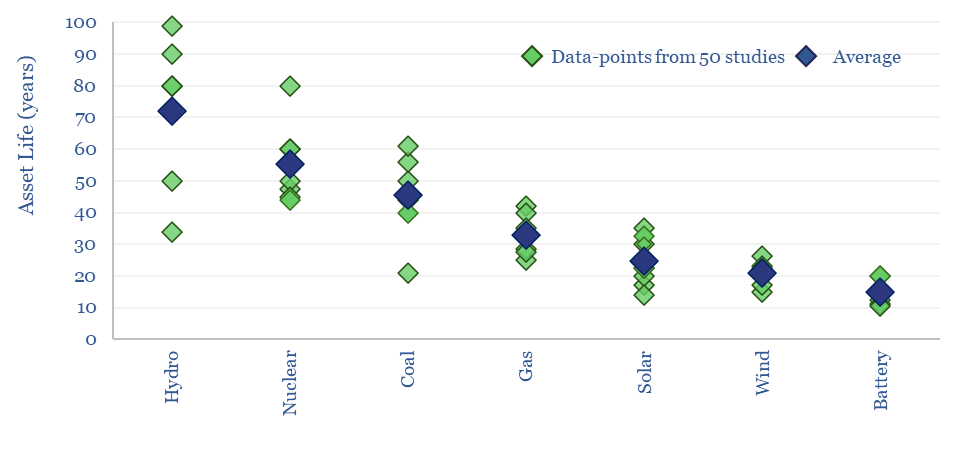
Power generation asset lives average c70-years for large hydro, 55-years for new nuclear, 45-years for coal, 33-years for gas, 20-25 years for wind/solar and 15-years for batteries. This flows through…










